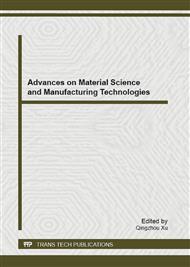p.167
p.172
p.178
p.182
p.191
p.196
p.200
p.206
p.211
Computational Fluid Dynamics Analysis of Working Fluid Flow and Machining Debris Movement in End Electrical Discharge Milling and Mechanical Grinding Compound Machining
Abstract:
The working fluid flow and the machining debris movement in the machining gap exercise a great influence on the process performance in end electrical discharge milling and mechanical grinding compound machining. In this paper, the working fluid flow and the machining debris movement in the machining gap are modeled based on the liquid-solid two-phase flow theory. The gap flow field is calculated with the software of Fluent, and the velocity field and the pressure field are analyzed. The results show that in the gap flow field of the compound machining, the working fluid flow can be accelerated, and the machining debris can be ejected timely by the rapid rotation of the tool electrode, so the compound process performance can be enhanced.
Info:
Periodical:
Pages:
191-195
Citation:
Online since:
December 2012
Authors:
Price:
Сopyright:
© 2013 Trans Tech Publications Ltd. All Rights Reserved
Share:
Citation:


